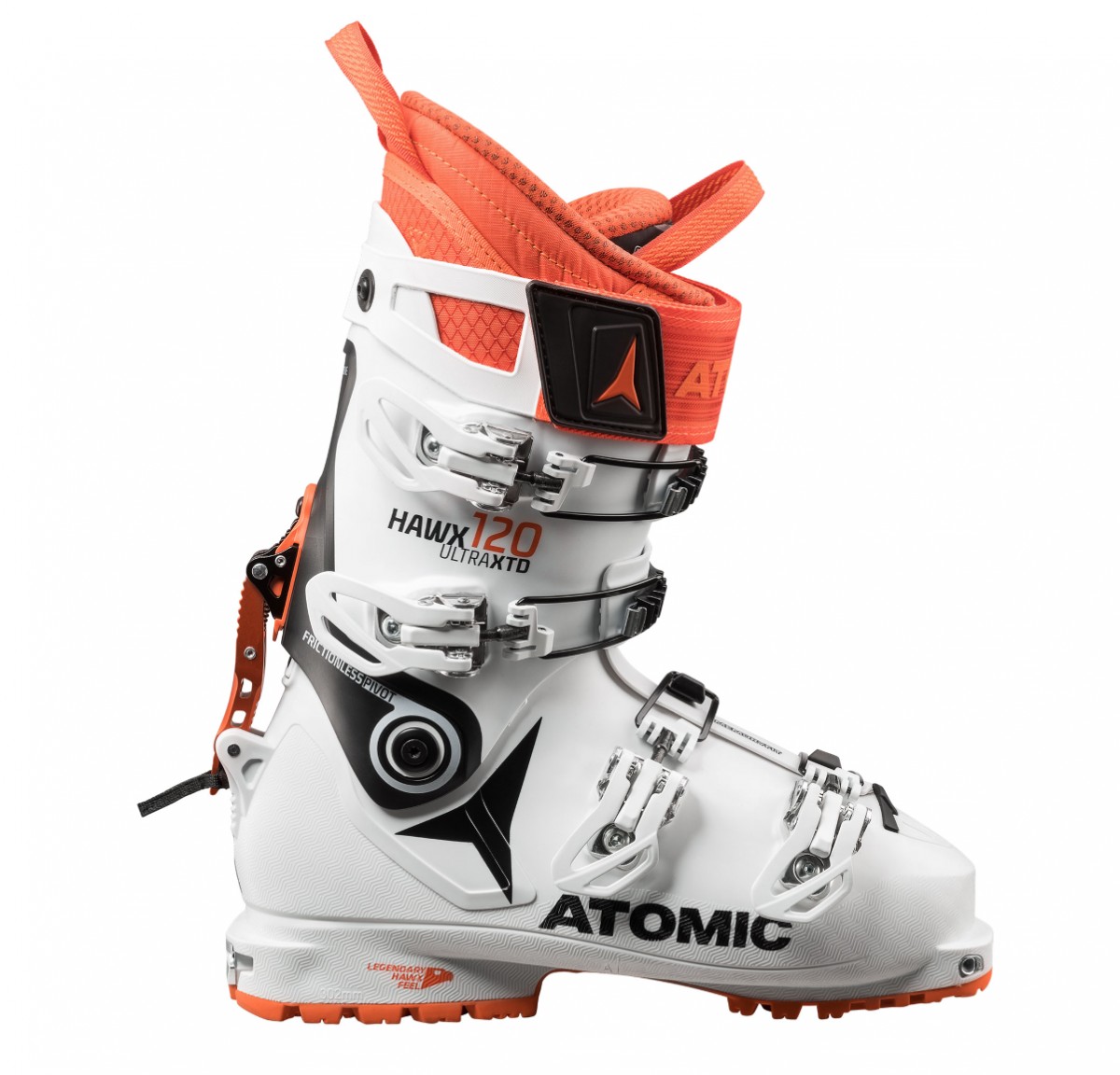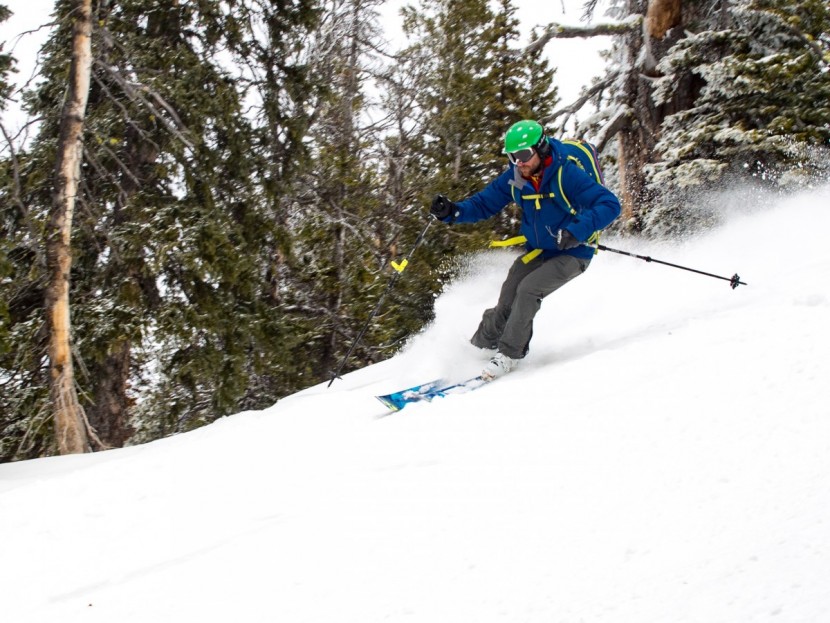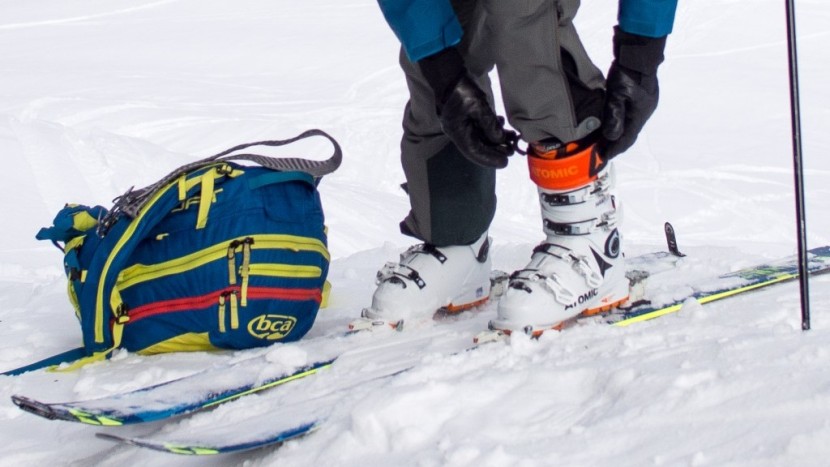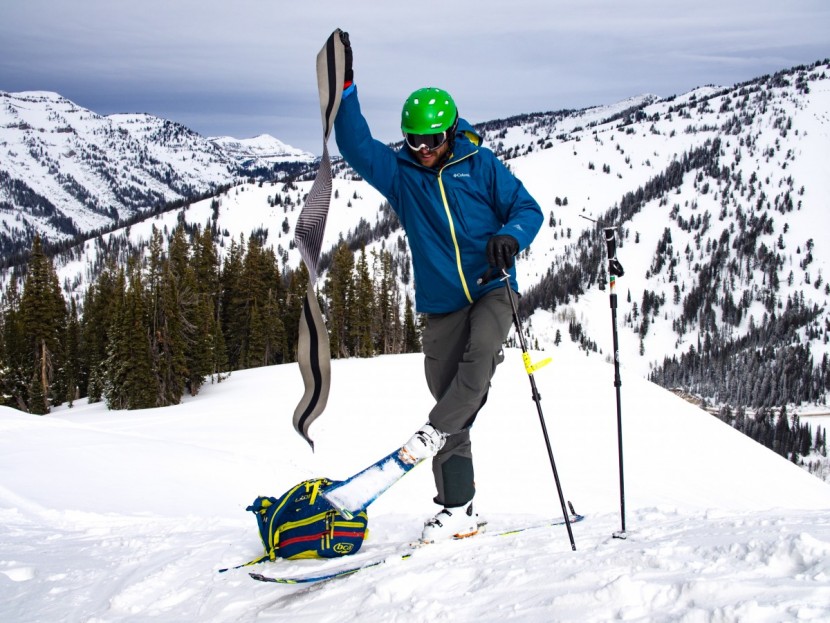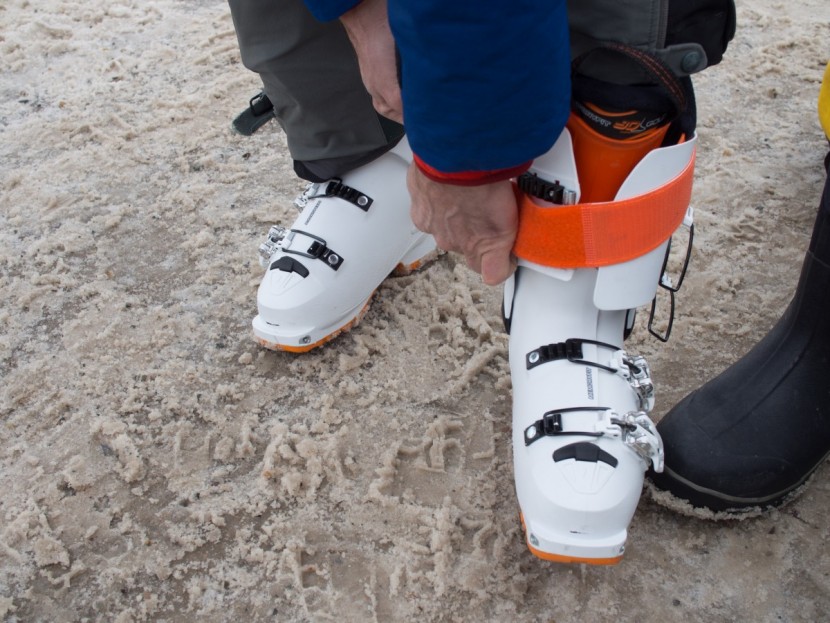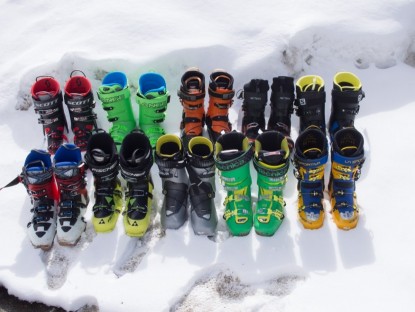Atomic Hawx Ultra XTD 120 Review
Our Verdict
Our Analysis and Test Results
AT ski boot design is exciting right now with progress on all fronts. Light boots are getting lighter and skiing better. Big boots are skiing better and getting lighter. Manufacturers continuously break long-held assumptions. The Atomic Hawx 120 XTD upends the idea that an overlap constructed boot can't tour all day, and brings the performance attributes of this construction style to the ski touring masses. The middle of the ski touring and ski mountaineering boot buyer bell curve is evenly split in preferences. All want to optimize downhill performance and minimize uphill interference. Nonetheless, half are willing to lean one way, while the other half leans the other. The Atomic Hawx XTD is a boot that (if it fits), we can heartily recommend to those looking for absolute maximum ski support in a package that still tours all you would want. We can recommend the Hawx Ultra XTD 120 for skiers looking to cover the full spectrum of backcountry skiing, from resort side-country to long traverses, as long as the user is looking to optimize downhill skiing with some touring compromises. The main drawback of the XTD is its weight, which can be mitigated with an aftermarket liner.
Performance Comparison
Uphill Performance
AT ski boots are compromises. Those best for the downhill are worst for the uphill, and vice versa. That being said, materials and construction are slowly narrowing the gap. Every once in a while a product comes along to narrow that gap. The Hawx Ultra XTD is one such product. For the degree of downhill performance it offers, it tours fabulously. There is more cuff articulation than your ankles can use, and the friction within that range is acceptable.
Weight
The Hawx Ultra XTD weighs seven pounds and five ounces. This is solidly in the upper echelon of weights for standard touring boots. Replace the liner and you can shave almost a pound for the pair, but downhill performance might suffer.
Downhill Performance
Here, the Ultra XTD shines. For the most part, overlap boots ski better than tongue constructed boots. The reasons for this are varied, but the result is a “smoother” stiffness. It is easy to make boots stiff, and easy to make them light. It is hard to make them stiff and light (enough) with a progressively tuned flex. Given construction limitations, overlap boots are better tuned for this progressive forward flex. The best boots respond predictably when the user presses his or her shins forward against the front of the boot. That predictable response is, ideally, very light initial resistance that steadily, and linearly, increases with forward flex of the user's ankle. Overlap boots do this best. Tongue boots are lighter, but suffer in progressive forward flex. The Atomic Hawx is an overlap boot and flexes like one. Lateral stiffness is more than you'd ever need, and if your skiing gets sloppy and you need to work “from the back seat,” the construction holds up there as well.
Comfort and Fit
The initial fit experience of the Atomic Hawx is almost perfectly average. Our lead test editor has an almost exactly average volume foot. When a boot is considered narrow, it pinches his foot. When a boot is considered wide, he swims in it. The Atomic fits perfectly, right out of the box, in overall volume. Further tipping things in favor of the Atomic, fit-wise, is the ability to heat mold the shell. Atomic claims (and other online user reviews verify this) that the shell can be molded in a rather simple process to add millimeters of width and volume, in specific places. We did not test this attribute.
The toe box is slightly snugger than the heel pocket.
The liner of the Atomic Hawx 120 is more like that of an alpine boot than that of a touring boot. The tongue is stiffened, and the lining is soft. An aftermarket liner will be considerably lighter, and likely tour better, but won't be as comfortable nor ski as well.
Warmth
Warmth is most closely correlated with fit. Boots too tight will inhibit circulation, so we encourage you to get boots that fit correctly for backcountry warmth. In our testing, we correct for fit differences for warmth comparisons. Fit should always be tailored and, ultimately, be the same for any user in all boots. After fit, warmth is most strongly correlated with the amount of material in the shell and liner. More material in both parts makes for warmer boots. The liner is the most insulating part, but the shell also provides protection. The Atomic has a relatively thin shell; given its ski performance, however, the liner is thick and insulating.
Ease of Use
The Atomic gets mixed reviews for ease of use. First, those coming directly from alpine boots will find the design familiar. As compared to regular resort kicks, the Atomic has the same buckle configuration and an overlap shell that is just as hard to get into. The buckles are durable and reliable. As compared to lighter touring boots, the six clasps (four buckles, velcro power strap, rear ski/walk mode lever) of the Atomic seem complicated. There are indeed more things to do in a transition with the Atomic, but all will work just as intended every single time. Notably, the ski/walk mode lever is the best we've ever seen on a ski-optimized touring boot. External, spring loaded, and easily cleared of ice; this is the first boot of its type that reliably switches between modes every single time. For the user seeking a boot like this, we consider the Atomic Hawx very easy to use.
A boot like this is made for your traditional ski touring outing. You will reach a summit and grab a snack, maybe sit down, while transitioning. You don't want to have to take off your gloves or battle weird levers, but you don't mind hiking up your pants and making some adjustments. For this rhythm the Hawx is great. Other boots, of course, change modes way faster. These light boots, though, are vulnerable to material failure. Break a buckle and you are screwed. We like where Atomic has made refinements (in the ski/walk mode lever) and where they have kept it familiar and proven (in the main buckles).
Value
The price of the Atomic is competitive, and the design is apt to be super durable. Our testing has not yet been extensive enough to truly test the durability, but we are confident that the integrity and buckles will last a long time. Reasonable price, great performance, and long durability add up to a great value.
Conclusion
We'll reiterate that the best endorsement of this boot is our lead test editor's one-time selection of it for day-to-day Grand Teton National Park ski guiding. Jed, for an entire season, chose this for everything from avalanche courses to athletic days of couloir powder hunting. It tours well enough for miles and miles, is warm and durable enough for everyday use, and skis like a dream. As long as you pair it with reasonably light touring skis, you won't wish for any more ski performance than the Hawx provides.


